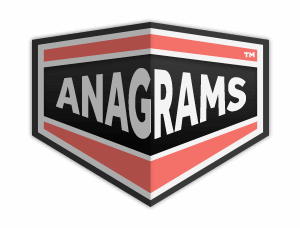What anagrams are available for teleview?
This page is about an anagram for the word weve tile that can be used in word games, puzzles, trivia and other crossword based board games.
weve tile
Translation
Find a translation for weve tile in other languages:
Select another language:
- - Select -
- 简体中文 (Chinese - Simplified)
- 繁體中文 (Chinese - Traditional)
- Español (Spanish)
- Esperanto (Esperanto)
- 日本語 (Japanese)
- Português (Portuguese)
- Deutsch (German)
- العربية (Arabic)
- Français (French)
- Русский (Russian)
- ಕನ್ನಡ (Kannada)
- 한국어 (Korean)
- עברית (Hebrew)
- Gaeilge (Irish)
- Українська (Ukrainian)
- اردو (Urdu)
- Magyar (Hungarian)
- मानक हिन्दी (Hindi)
- Indonesia (Indonesian)
- Italiano (Italian)
- தமிழ் (Tamil)
- Türkçe (Turkish)
- తెలుగు (Telugu)
- ภาษาไทย (Thai)
- Tiếng Việt (Vietnamese)
- Čeština (Czech)
- Polski (Polish)
- Bahasa Indonesia (Indonesian)
- Românește (Romanian)
- Nederlands (Dutch)
- Ελληνικά (Greek)
- Latinum (Latin)
- Svenska (Swedish)
- Dansk (Danish)
- Suomi (Finnish)
- فارسی (Persian)
- ייִדיש (Yiddish)
- հայերեն (Armenian)
- Norsk (Norwegian)
- English (English)
Definition
What does teleview mean?
- Teleview
- Teleview was a system for projecting stereoscopic motion pictures invented by Laurens Hammond, best known as the inventor of the Hammond organ. It made its public debut on 27 December 1922 at the Selwyn Theatre in New York City, the only theater ever equipped with the system. The program included several short films, a live presentation of projected 3D shadows, and the 95-minute feature film M.A.R.S., later re-released in 2D as Radio-Mania. Teleview pioneered the alternate-frame sequencing method of stereoscopic 3D projection. The basic principle had been patented as early as 1897, but the improved Teleview implementation was the first to be presented to the public. Left-eye and right-eye films were run through a pair of interlocked projectors with their shutters operating out of phase. Each shutter was three-bladed, so that each pair of film frames was projected three times before the mechanisms moved the next pair of frames into position. At the minimum 16-frames-per-second silent film projection speed, this resulted in a minimum of 48 flashes per second per eye, eliminating the severe flicker that fatally flawed earlier systems with the frames physically alternating on a single strip of film projected at twice the normal rate.
Embed
Citation
Use the citation below to add this anagram to your bibliography:
Style:MLAChicagoAPA
"weve tile." Anagrams.net. STANDS4 LLC, 2025. Web. 5 Feb. 2025. <https://www.anagrams.net/term/14503104>.







Discuss this teleview anagram with the community:
Report Comment
We're doing our best to make sure our content is useful, accurate and safe.
If by any chance you spot an inappropriate comment while navigating through our website please use this form to let us know, and we'll take care of it shortly.
Attachment
You need to be logged in to favorite.
Log In